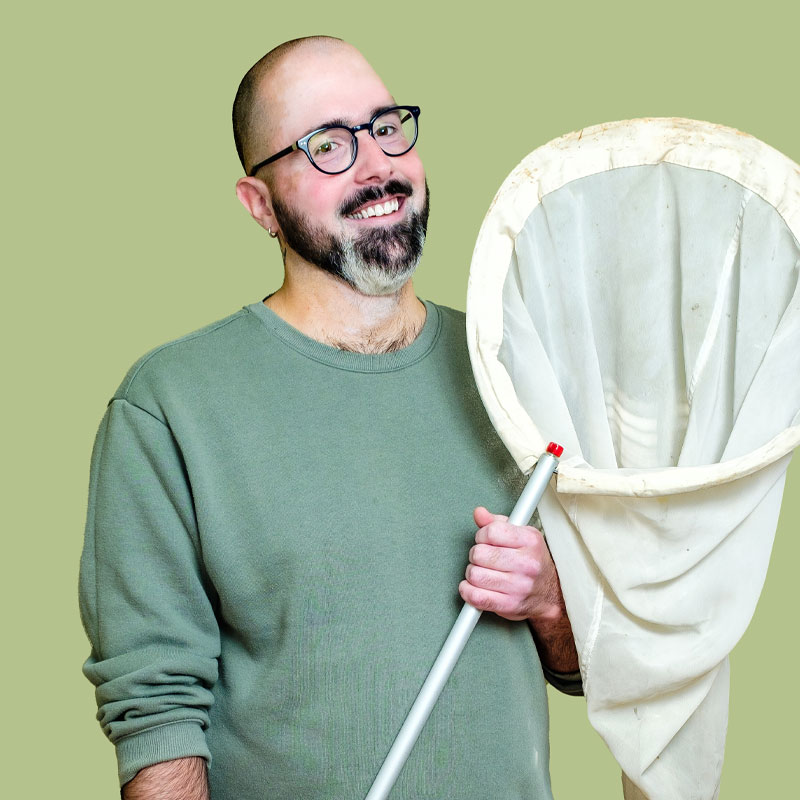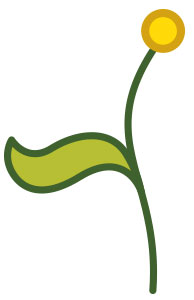

Vaughn Shirey
BS environmental science ’17
David H. Smith Postdoctoral Conservation Research Fellow, University of Southern California (Los Angeles, California)
Age 30

Vaughn Shirey would like you to know a few things about spiders.
“They are amazing pest control agents,” he says. “They often get a bad rep because we have this sort of innate reaction to them. But they are very efficient at controlling other insects that we don’t like. And they’re actually kind of cool-looking close up.”
Shirey wasn’t born a bug lover, but he came to appreciate their ecological importance during his time as an undergraduate at Drexel. Originally a computer science major, he found himself drawn to the Biodiversity Earth and Environmental Sciences Department during his second year on campus. He credits Drexel professors Jon Gelhaus, Steve Dilliplane, and Richard McCourt for much of his academic success. His co-op at the Academy of Natural Sciences of Drexel University confirmed to him that he wanted work that was more connected to nature.
He hasn’t looked back.
The now 30-year-old Shirey is the David H. Smith Postdoctoral Conservation Research Fellow at the University of Southern California. And although he’s pivoted from spiders to butterflies, his research is still devoted to using data science to answer questions about the natural world.
“We need to really care about these little things that actually make a big impact.”
“I’m really interested in using butterflies as a catalyst for change in conservation and saying, ‘We need to really care about these little things that actually make a big impact,’” he says. “I see my career focused on the research of butterflies and using all these nice, fancy data science tools to answer pressing questions and increasing the public perception of insect conservation through butterflies.”
After graduating in 2017 with a BS in environmental science, Shirey won a Fulbright scholarship that allowed him to study spiders at the Laboratory of Integrative Biodiversity Research in Helsinki, Finland. There, he studied how museum data could be used to help better conserve invertebrates. Next it was on to Georgetown University in Washington, D.C., where his thesis provided the first reconstructions of historical butterfly communities facing climate change in North America’s boreal and Arctic regions. Why the switch from spiders?
“I always say that the butterflies are easier to talk about at a party than spiders, which is true,” he jokes. “But I switched to butterflies because they actually have the best data. That’s perhaps not so surprising in terms of natural history collections data and community science data because people love to go out and photograph butterflies.”
Among his most important findings so far is how climate change is impacting Arctic butterflies.
“We tend to not pay too much attention to the less diverse butterfly communities up there, but they are greatly impacted by warming temperatures,” he says. “I think bringing more attention to these really unique and highly adapted communities and the threats they face is crucial.”
He coordinated an international team to produce the world’s largest dataset of butterfly traits, which was published in Nature’s Scientific Data. So far, they’ve logged more than 12,500 species. The team uses artificial intelligence to get traits from PDFs of field guides.
“We can pull out things from the image itself. How big is the butterfly? Do we see butterflies changing in shape over centuries of time in response to stress? Things like that,” says Shirey, who considers himself a quantitative ecologist, conservation biologist and data scientist. “I’m working on developing those AI pipelines for mobilizing the data, but also collecting all this new data about size, shape, color: things of that nature.”
Shirey is now using computer applications to understand how climate, habitat loss and pesticides are impacting the unique butterfly communities of the American Southwest.
“I see myself using butterflies to really advance the public perception of insect conservation more generally,” he says. “I think butterflies are a great soft introduction to insects and caring about insects. I’m a butterfly guy at this point.”
How I Pay it Forward
I cannot understate the value of mentorship in my career, and I strive to pay that forward in my day-to-day research. Equipping students from underrepresented backgrounds in STEM with statistics and artificial intelligence skills is a core mission of mine. Further, science has even greater importance when we can expand upon generating new knowledge to enrich the lives of others (both human and non-human!) I find that my science is greatly enriched by partnering with nonprofits who engage in on-the-ground action to protect biodiversity.





